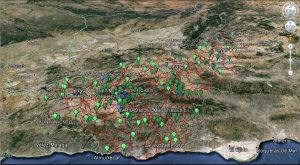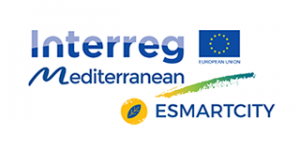FULL PROJECT INFORMATION
The EU wants to promote sustainable energy policies among its administrations, as well as promoting ICT solutions and better management of public services. Therefore, the promotion of Intelligent Network technologies – Smart Cities is vital for the EU. However, all the projects developed around this theme, and all the experiences are being directed mainly to cities with more than 50,000 inhabitants, and the resources and technologies must be able to adapt also to small and medium-sized municipalities in peri-urban and rural areas, the needs being very different.
For this reason, the GRAMAS sustainable network of the Provincial Government (Diputación) detects the need to work on solutions for this type of municipality (those of the province of Granada in general), as well as building an online platform for small and medium-sized municipalities with less than 20,000 inhabitants in peri-urban areas, urban and rural areas where guidelines for the application of Smart Cities technologies in their municipalities will be available.
Starting from the need detected in our region, and in other regions of the Mediterranean arc, the ESMARTCITY Project is proposed. This project aims to exploit the potential of the MED area under the sub-theme of “green growth of smart cities” in order to increase the overall level of innovation for the Europe 2020 strategy.
In many regions, the problems of unemployment, the use of ICT, mobile infrastructure, socioeconomic inclusion, competitive pressure, etc. are shared. The objective of this project is to find solutions to common problems of the different regions. To this end, both large metropolitan areas and small cities in rural areas are identified. Wanting to find solutions to specific local problems with a “bottom-up” approach.
The project relied heavily on the lessons learned in the European 7PM project “SMARTSANTANDER” in terms of public innovative purchase, one of the main fields where you want to work.
The project continues to be a holistic approach to networking / clustering led by existing innovative clusters in the area. The Smart City concept uses the ubiquitous digital infrastructure of modern cities, enriching it with intelligent devices, integrated systems, sensors and actuators, in order to allow the implementation of innovative services / applications for end users / citizens. It can improve the innovation capabilities of cities, transforming them from simple objects into innovation ecosystems, producing new work and life scenarios in a bottom-up approach. Both companies and the academic world, citizens and public and municipal authorities benefit as suppliers and consumers of new applications / services. Despite the existing pilot demonstrations, the Smart City market remains largely driven by “technology.” That is why it is important to create a public utility and a citizen attraction in the face of severe implementation of these technological solutions.





